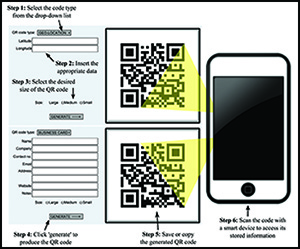Published online by Cambridge University Press: 15 September 2016

Accurate, efficient and clear recording is a key aim of archaeological fieldstudies, but one not always achieved. Errors occur and information is notalways properly recorded. Left unresolved, these errors create confusion,delay analysis and result in the loss of data, thereby causingmisinterpretation of the past. To mitigate these outcomes, quick response(QR) codes were used to record the rock art of Telperion Shelter inMpumalanga Province, eastern South Africa. The QR codes were used to storeimportant contextual information. This increased the rate of fieldrecording, reduced the amount of field errors, provided a cost effectivealternative to conventional field records and enhanced data presentation.Such a tool is useful to archaeologists working in the field, and for thosepresenting heritage-based information to a specialist, student or amateuraudience in a variety of formats, including scientific publications. Wedemonstrate the tool's potential by presenting an overview and critique ofour use of QR codes at Telperion Shelter.